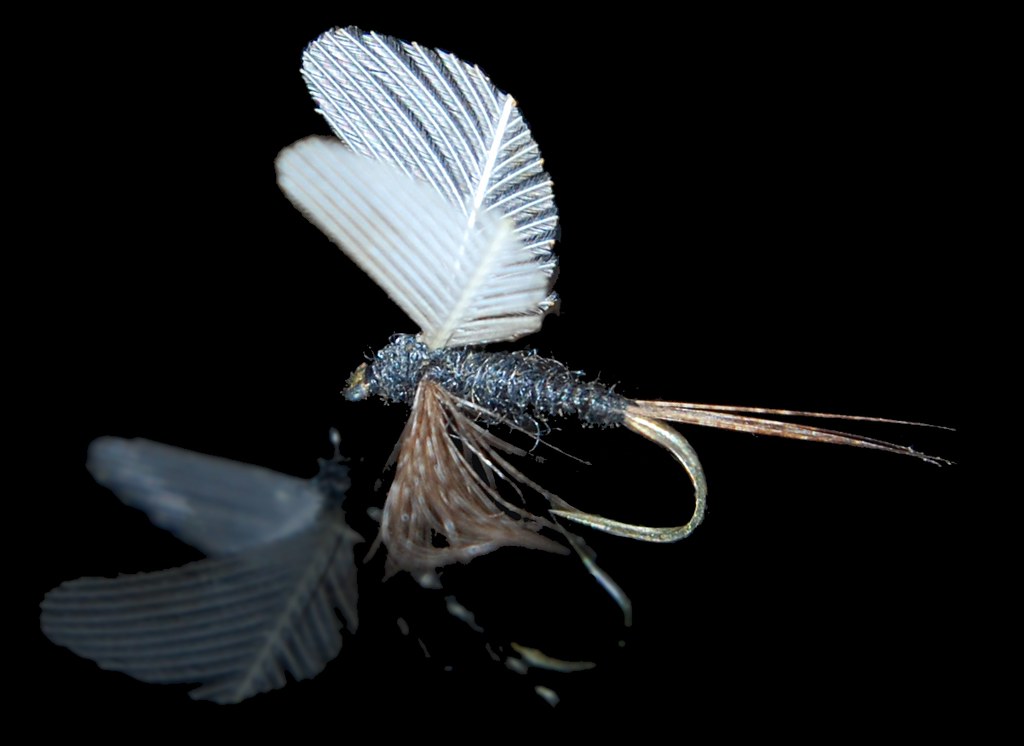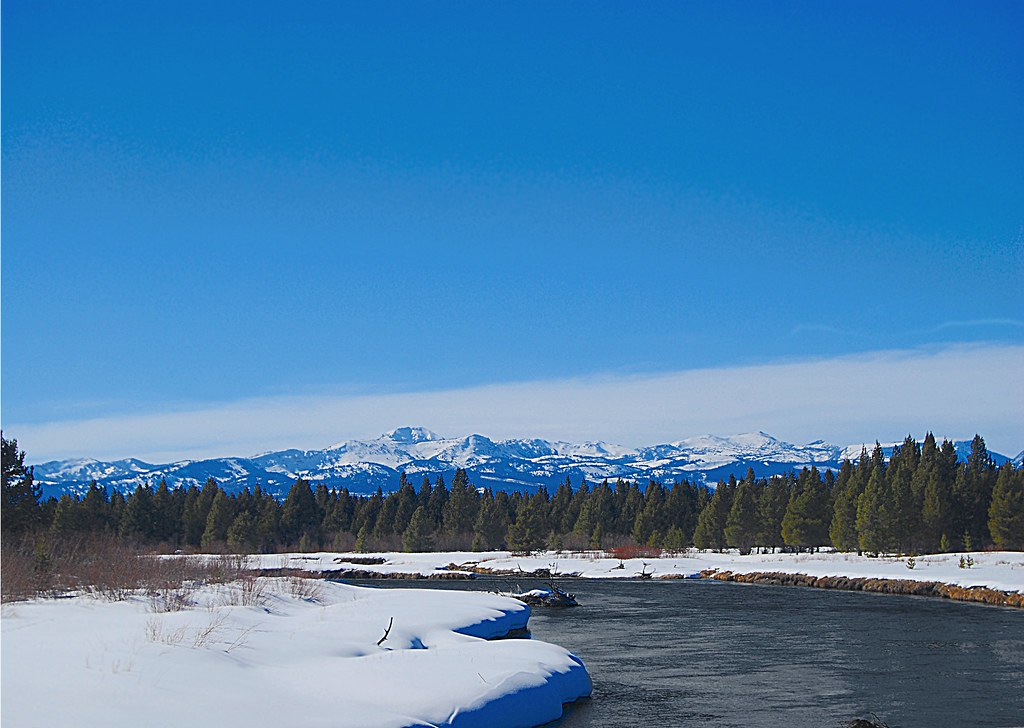THE FLY OF THE HOUR
Even At -6 F
bring your woolies
 |
| SIZE 22 IS THE "LARGE" SIZE FOR THE KILLER MIDGE |
-------
.. It's a bit brisk outside right now, (-19 F.) Keeps the Hoi Polloi down. Some of the neighbors too!.. On the other hand, the young lions of the neighborhood are making hay while the temps are low.
.. There's a certain bit of stuff in the fiber of 5 or 6 of our younger neighbors that demands that they fish, weather be damned! They are courageous, immune to the cold, and very facile in the art of tying "fun flies."
.. The KILLER MIDGE is one of the current favorites of these folks. It's a size 22, (or 24, or 26 - yikes,) standard, blue-black midge pattern with a couple of simple, (they tell us,) modifications. The upright fan wings made from very small chicken feathers are the most noticable modification. Outriggers made of fibers from chuckar partridge rump feathers is another added accoutrement.
.. The body is made of black Antron. The tail is pheasant fibers. Everything is way too small to see if you're of the mature variety of fisher.
.. Well greased, (or the contemporary equivalent,) these little dumplings float high, are easy to see, (relatively,) and are irresistable to the trout on the Madison River between the lakes in the Hebgan Tailwater.
.. The neighborhood jargon refers to midges that hatch on the sunny days during the winter as 'snow flies.' Bright sun brings them out in the late morning or early afternoon. Catching is best on still days - of course. It's been perfect for about a week now.
.. Two nights ago it was -26 F, last night it was -22F. The cold air bothers neither the fish nor the flies, nor the kids. We watch.
-------
 |
| At -20 F particulates leave the air, the clouds thin out and the sky gets real big. |




.jpg)






